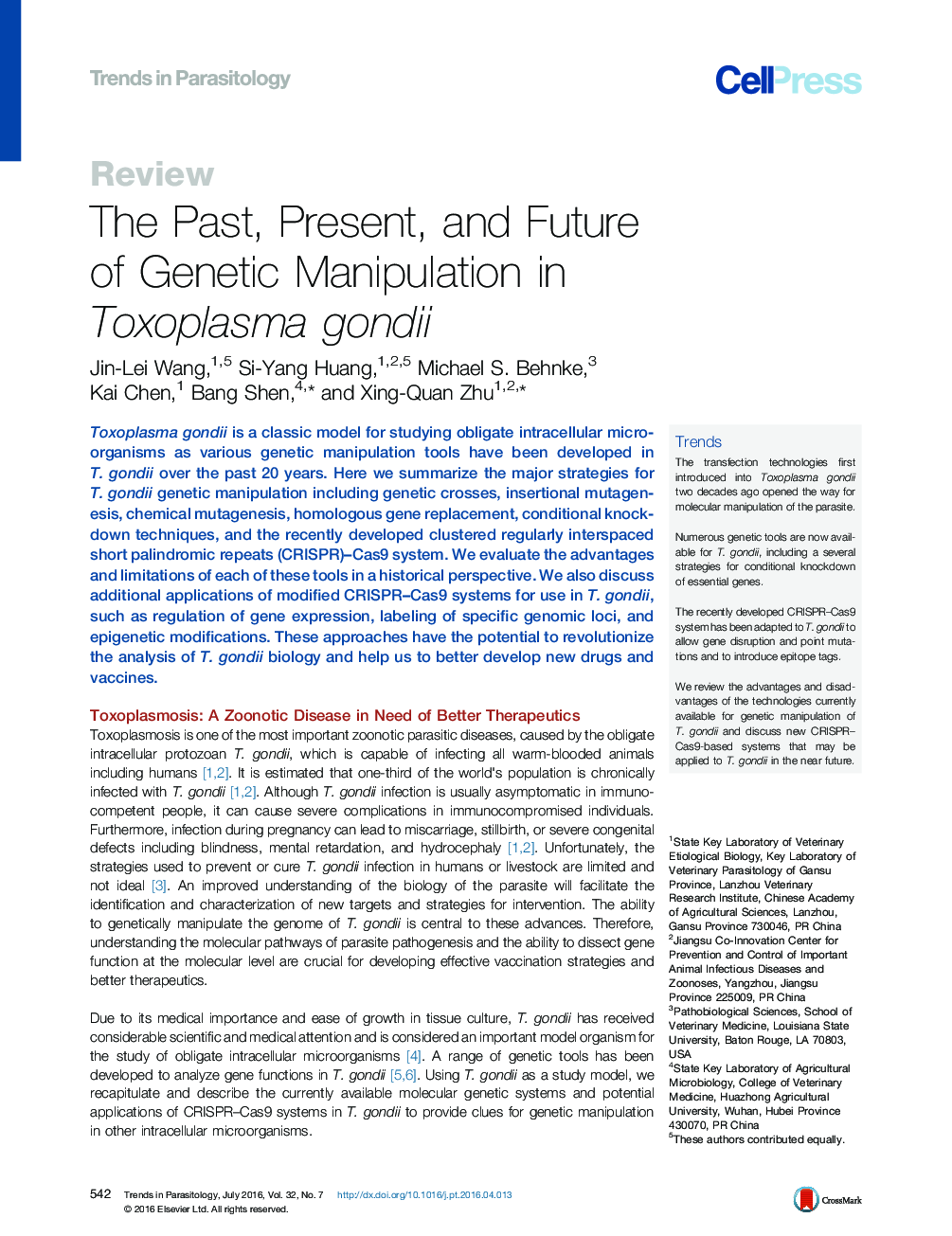| Article ID | Journal | Published Year | Pages | File Type |
|---|---|---|---|---|
| 3422880 | Trends in Parasitology | 2016 | 12 Pages |
Toxoplasma gondii is a classic model for studying obligate intracellular microorganisms as various genetic manipulation tools have been developed in T. gondii over the past 20 years. Here we summarize the major strategies for T. gondii genetic manipulation including genetic crosses, insertional mutagenesis, chemical mutagenesis, homologous gene replacement, conditional knockdown techniques, and the recently developed clustered regularly interspaced short palindromic repeats (CRISPR)–Cas9 system. We evaluate the advantages and limitations of each of these tools in a historical perspective. We also discuss additional applications of modified CRISPR–Cas9 systems for use in T. gondii, such as regulation of gene expression, labeling of specific genomic loci, and epigenetic modifications. These approaches have the potential to revolutionize the analysis of T. gondii biology and help us to better develop new drugs and vaccines.
TrendsThe transfection technologies first introduced into Toxoplasma gondii two decades ago opened the way for molecular manipulation of the parasite.Numerous genetic tools are now available for T. gondii, including a several strategies for conditional knockdown of essential genes.The recently developed CRISPR–Cas9 system has been adapted to T. gondii to allow gene disruption and point mutations and to introduce epitope tags.We review the advantages and disadvantages of the technologies currently available for genetic manipulation of T. gondii and discuss new CRISPR–Cas9-based systems that may be applied to T. gondii in the near future.
